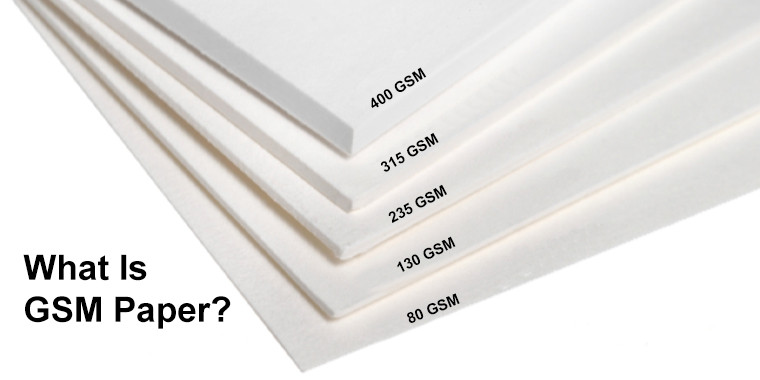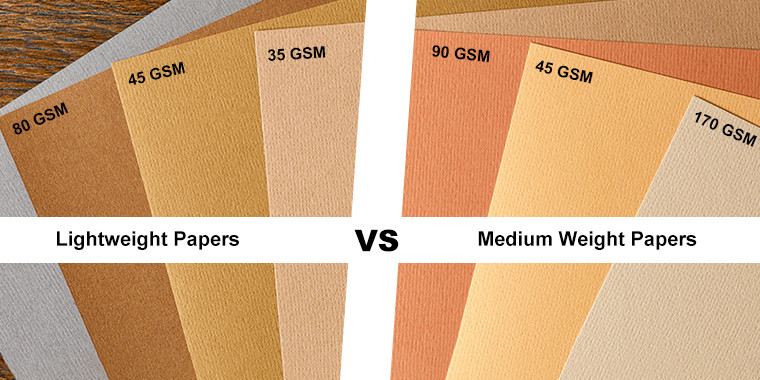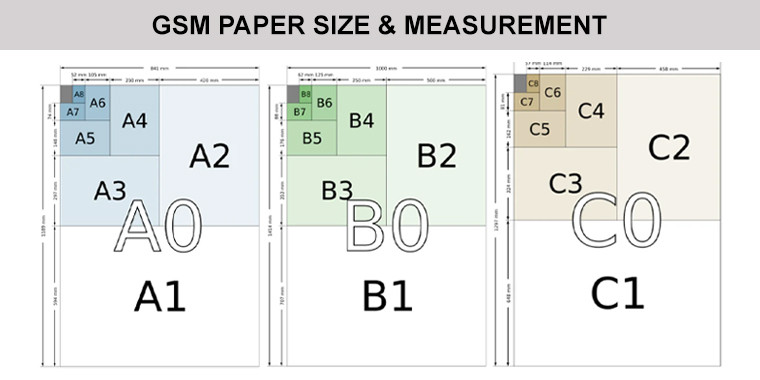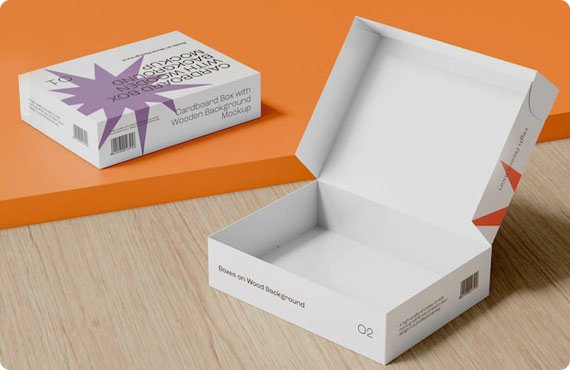September 16, 2025

Have you ever wondered why some paper feels thin and flimsy while others feel thick and luxurious? The answer lies in one simple measurement: GSM.
Whether you’re printing a resume or designing premium custom packaging, knowing the weight of your paper is essential. Too often, people order paper online only to find it’s too thin or too thick for their project. The key to avoiding this frustration is understanding what those "100 GSM" or "250 GSM" numbers mean.
This article is your complete guide to GSM. We'll explain what it stands for, what the numbers mean, and how to choose the perfect paper for any project—saving you time, money, and hassle.
GSM stands for Grams per Square Meter. It is the standard unit of measurement that is used to determine the GSM paper weight and the weight of a single sheet of paper measured in square meters.
In addition, it helps you by providing a universal and consistent way to compare the paper thickness of different types and uses. E.g., the weight of the printing paper might be 80 GSM. On the other hand, the weight of premium invitation card stock could be 300 GSM or more. In short, if the number of GSM is high, then the thickness of the paper is also higher.
This simple measurement helps you quickly understand the paper’s texture and durability before you buy. However, GSM has become the global standard when it comes to paper measurement because it has a simple and metric-based system that works regardless of paper size or origin. This makes it easier for users to select and compare the papers internationally.
Understanding the importance and use of GSM paper helps you to make the right choice for any print or packaging project. In printing, GSM analysis examines how ink interacts with the surface to affect both quality and legibility. On the other hand, GSM in packaging or publishing influences the strength, finish, and presentation of the final product.
If the thickness of GSM paper is high, then it means better durability. The paper is less likely to bend, tear, or allow ink to show through. Which is why we recommend thick paper for product boxes, business cards, and brochures.
For everyday use, we recommend a lower GSM paper. Because it is thinner and lighter, you can use it in notebooks, letters, or for printing.
The look and feel of the paper also varies with GSM. If you hold the heavier paper, then it will look more professional. This paper is perfect for luxury packaging brands that want to leave a lasting impression on their customers.
Some Regions, like the U.S, use the pounds (lb) system for paper weight. We are exploring the GSM vs lb comparison to help you understand the difference and make informed decisions.
Both GSM and lb (pounds) are used for paper weight, but they are not the same. The standard paper that is used in different countries of the world is GSM, whereas in the United States, the standard applied is lb.
The major difference between these two terms is how they measure the weight of paper. GSM is made according to the actual weight of the paper, while lb depends on the weight of the stack of paper, which is in its original size. Let’s understand both of these terms with the help of an example:

A normal sheet of paper exists in a variety of thicknesses, such as light, medium, and hard. Here is the detailed explanation of each type of GSM paper, along with its best uses.
These papers are like Newspapers, copier paper, and notepads that are thin and flexible. You can easily fold these types of paper, write on them, and use them for everyday purposes.
80 GSM paper is the standard one that is used for printing documents, schoolwork, and letters. You will find them in homes or offices. They are very light, soft, and easy to tear. Lightweight papers are best for note-taking, quick printing, drafts, and bulk printing where you require fancy or heavy paper.
Another type is medium, which is of 90-170 GSM, and it is smoother and stronger. If you want paper of better quality without being thick, then medium-weight papers are great to use. The examples of these papers are posters, flyers, brochures, art paper, and more. They feel stronger, smoother, and hold inks very well. Medium-weight GSM Paper is great for Double-sided printing, marketing materials, and a more professional look.
The heavyweight papers are thick and firm, and they don’t blend easily, offering a premium feel. Product packaging, postcards, and greeting cards are the best examples of this type of GSM Paper.

Another important aspect is to use the proper size of paper for the project. The standard sizes required in different printing projects, including custom business cards, printing of flyers, or booklets.
So, here are the commonly used paper size systems:
All of these help you to choose the right size of paper with the accurate GSM paper weight.
ISO A series is the most widely used paper size, and it’s completely based on the metric system that starts with A0, which is equal to one square meter. Similarly is the way we measured GSM refers to the weight of the square meter.
Every smaller A size is measured by cutting half of the previous size from its edges. Let’s say A1 is half of A0, A2 is half of A1, and the hierarchy moves on. Here are some of the familiar A sizes:
Another paper series is ISO B, which is probably used for large prints, such as books, posters, or more. They are larger than the A series.
Examples of B sizes include:
ISO C series is commonly used for envelope purposes, and they are designed to fit the standard A-sized paper.
Here are a few common ones:
Whereas GSM gives you the weight of the paper, paper sizes such as A4, B2, and C6 let you know the size of the paper. A combination of these two will enable you to select the most suitable one for your print project.
GSM (Grams Per Square Meter) defines the weight of the paper that you used for the packaging project. Various types of GSM paper, like lightweight, medium, and heavyweight, with different measurements, are available in the market. Additionally, we explained the difference between GSM and lb (pounds), which is mainly used in the US, to enhance your understanding.
If you are looking for a paper with the right weight and size that makes your packaging more unique, contact Custom Designs Boxes. With years of experience in the packaging industry, we provide a range of services related to packaging boxes.
Find the perfect packaging solutions tailored to your industry niche.
Don't just imagine – experience excellence up close, as you can check our superior craftsmanship before making your decision by ordering your sample kit.
